Pop Culture
Netflix’s One Piece Review: The live action adaptation does justice to the beloved Japanese saga

Netflix’s One Piece was released on 31st August and it is winning hearts. Is it worth a watch? Read the full article to find out!
Shows and movies produced by Netflix are surely top tier but while it has wonderfully adapted to a number of American Comics, it still struggles to create the hype among the anime watchers with its anime live-action adaptations. Speaking of the most talked-about adaptations, we have Death Note and Cowboy Bebop which didn’t resonate well with the audience. The reason could be tweaking the canon storylines, poor CGI, bad cast etc. But the case with Netflix’s One Piece is different. It is a rare case when a live-action adaptation of a Japanese anime amazes us and the recently released Netflix’s One Piece just did that.
What’s One Piece about?
The story of One Piece is set in the world of myths, monsters and of course, Pirates which follows the adventures of a young pirate named Monkey D. Luffy and his crew. He dreams of finding the treasure of One Piece and becoming the king of the pirates even in the situation where the circumstances didn’t seem to be in his favor. He goes on a journey and finds friends to join him and obstacles to tackle but in all these circumstances he stays resilient and cannot see anything apart from his dream.
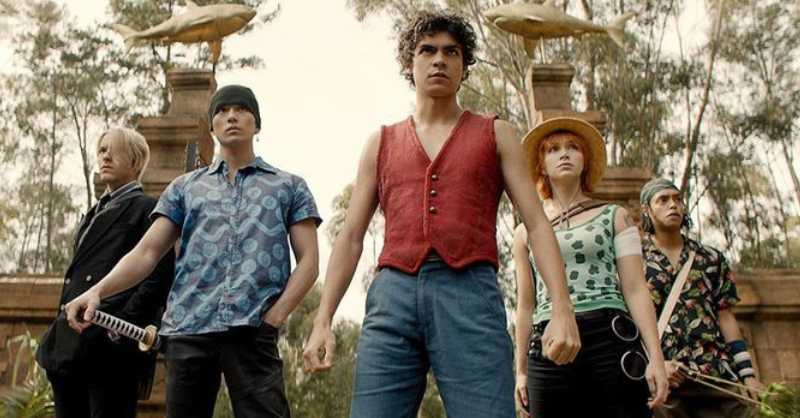
What’s so good about this adaptation?
One Piece by Eiichiro Oda is one of the longest running manga of all time and it just gets more interesting over time with its interesting arcs, thought provoking philosophies, unique fight sequences and intriguing characters. The fictional world of One Piece has featured different species, locations, conflicts and cultures. One Piece sounds like that one story that feels impossible to adapt into a live-action. There is a whole new world that you need to create for the story and it’s a challenge to imagine and adapt to a world that is so different from ours. The storyline of the show mostly follows the manga which wasn’t the case with adaptations like Death Note. It takes us through all the arcs that happened in the manga while Luffy was meeting his crew members. Some of the arcs are missing or have been tweaked but it just makes it better or atleast doesn’t feel unnecessary, forced or rushed.

This adaptation shows efforts in sticking to the original world building
Doing a live-action of a story that features a completely different world is surely not an easy thing to do for a production and we have often seen live-action find an easy way out with tweaking the stories or with poor CGI effects but this adaptation of One Piece did show its efforts in sticking to the original world building even with the minute details like the Snail phones. In One Piece, Snails are used as tools for communication and surveillance and what makes them interesting is the fact that they are living and breathing creatures. In the live-action, we saw vice-grand admiral of the Navy, Garp use the snail telephone to make a call. One of my personal favorite details can be the Bounty poster rips by the pirates. While it may feel like an unnecessary or skippable detail to someone who hasn’t watched the anime or maybe it is. But with these details the adaptation shows its willingness to embrace the weirdness of the story. With these details, Netflix’s One Piece attempts to embrace the weirdness of the world that Eiichiro Oda created.

Did we mention how well-choreographed the fight scenes are?
Some of us watch anime just for its thrilling fight scenes and physics defying combat and it’s relatively easier to create those fight scenes when it’s animated and you’re not restrained by realism. Luffy uses the power of stretchability and I had my doubts if the live-action would be able to recreate it without making it look gaudy? And yeah it does! It does it without dimming the flashiness of the powers of any of the characters like how Zoro uses three swords while fighting or how Buggy dismantles his body doesn’t feel forced. The sword fights and combats are just top-notch.

Intriguing Characters
If you have watched the anime or have read the manga, you know where we are going with this. We all know how the show features well written characters and arcs. Unlike many shonen shows that revolve around the lead character, One Piece has given depth to each of its characters even the villains. Villains that you’re going to come across within these 8 episodes include Captain Alvida, Buggy the Clown, Mihawk, Arlong etc. and they have all been written well. Some of it can be accredited to the amazing performances by the actors. Maybe that’s the reason why we have watched over a 1000 episodes and still don’t feel bored by it. Someone who wants to understand the hype of the anime but doesn’t have the time to watch so many episodes, Netflix’s One Piece is a must watch for you.
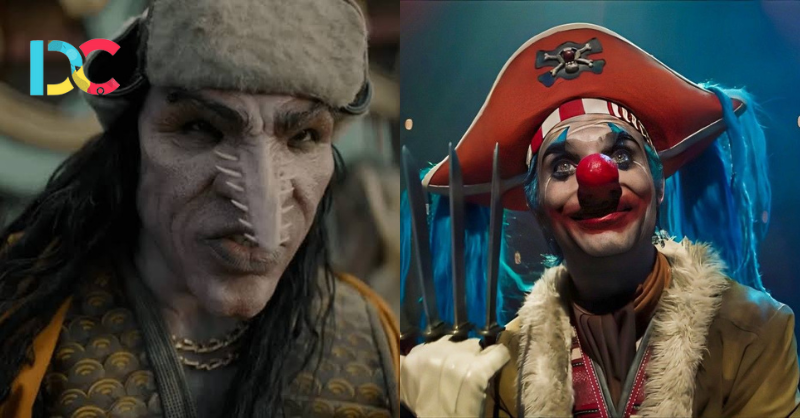
Check out the Trailer:
Also Read: ‘My Hero Academia’ Arrives on Cartoon Network making its debut on Indian television screens
Follow is for more @discultured
Entertainment
Uttarakhand Wedding Awards 2025: Celebrating the State’s Journey Towards Becoming a Premier Global Wedding Destination
Uttarakhand Wedding Awards
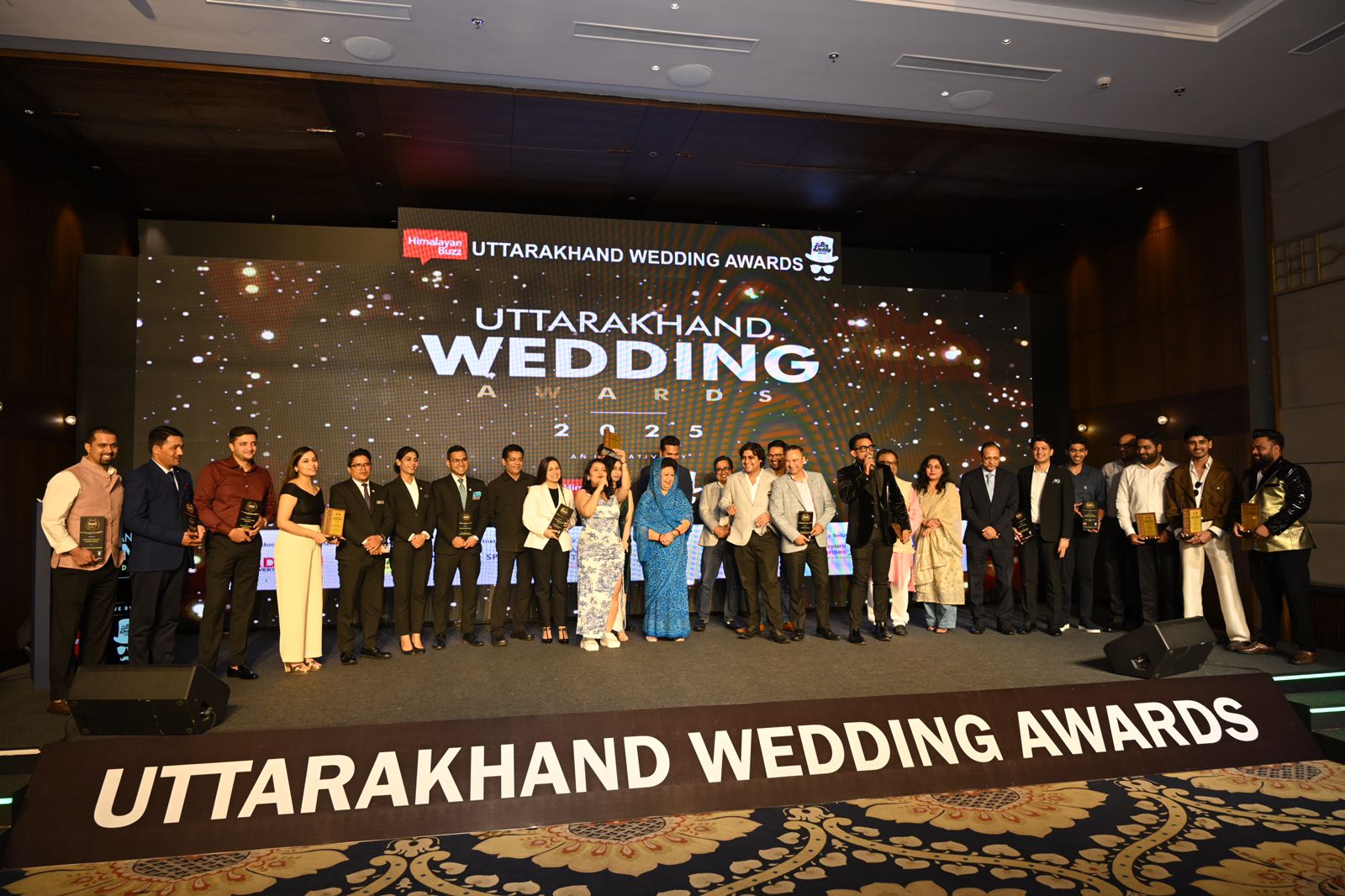
Dehradun, 14th September 2025 – The Uttarakhand Wedding Awards 2025 lit up the evening skies at Hyatt Centric, Dehradun, with a dazzling celebration of excellence, creativity, and vision in the wedding industry.
Organized by Himalayan Buzz Admedia LLP, in association with The Big Daddy Events Co., the event brought together leaders from the wedding, hospitality, and tourism sectors to recognize excellence and lay the foundation for Uttarakhand’s emergence as a world-class wedding destination.
The glittering evening featured an exclusive guest list of wedding planners, hoteliers, tourism officials, and government representatives, all working collectively towards transforming Uttarakhand into a premier hub for wedding tourism.
Dignitaries Grace the Occasion
The awards night witnessed the presence of eminent dignitaries who have been instrumental in shaping the state’s cultural and tourism landscape. The event was graced by Maharani of Tehri Garhwal and Member of Parliament, Mala Rajya Laxmi Shah, attending as the Chief Guest. Her presence added a touch of regal elegance and highlighted the importance of preserving Uttarakhand’s rich heritage while promoting it as a global wedding destination.
Accompanying her were other distinguished Guests of Honor, including Mrs. Tripti Juyal Semwal, Vice President of Maya Devi University, Mrs. Poonam Chand, Additional Director at Uttarakhand Tourism, and Shri Saurabh Thapliyal, Mayor of Dehradun. Their combined presence underscored the collaborative effort between government bodies, academia, and industry leaders to elevate Uttarakhand’s wedding tourism ecosystem.
Strategic Industry Dialogue – Vision & Mission 2030
One of the evening’s most significant highlights was a panel discussion on “Uttarakhand Wedding Vision & Mission 2030 – Building a Sustainable, Spiritual, and World-Class ‘Wed in India’ Destination.”
The panel featured some of the most prominent voices from the wedding and hospitality sectors. Esteemed panelists included Ravi Goel, Co-founder of The Big Daddy Events; Gaurav Chanana, Whistling Teel; Rishabh Panchhi, Panchhi Events; Ayu Tripathi, Director, Aahana Resort, Jim Corbett; Ajit Singh Gandhi, General Manager, Hyatt Centric Rajpur Dehradun; and Malabika Das, Director of Celebrations, Hyatt Regency Dehradun Resort and Spa.
The session was moderated by Avinash Mishra, Founder of Badmash Kebabi, ensuring a seamless exchange of ideas and perspectives.
Recognizing Excellence – Winners of Uttarakhand Wedding Awards 2025
The evening culminated in honoring outstanding individuals and organizations whose work has set new benchmarks for quality, creativity, and service in the wedding industry. From luxury resorts and planners to designers and service providers, each winner demonstrated exceptional innovation and dedication to building world-class wedding experiences in Uttarakhand.
Uttarakhand Wedding Awards 2025 – Winners
- Best Wedding Venue – Luxury Hotel – Taj Mussoorie Foothills, Dehradun
- Best Wedding Venue – 5 Star Hotel – Hyatt Regency Dehradun Resort and Spa
- Best Wedding Venue – Luxury Resort – Aahana Resort, Jim Corbett
- Best Wedding Venue – Resort – Saraca Resort & Spa, Corbett
- Best Wedding Venue – Ganges Beach – Summit by the Ganges, Rishikesh
- Best Wedding Venue – Heritage Hotel – Hotel Chevron Fairhavens, Nainital
- Best Wedding Venue – Bespoke – Hyatt Regency Dehradun Resort and Spa
- Best Wedding Venue – Mid Size – Regenta, Dehradun
- Best Wedding Venue – City – Hyatt Centric, Rajpur Road, Dehradun
- Best Wedding Venue – Midscale Destination Wedding – Pride Premier Solitaire, Dehradun
- Best Wedding Venue – Lakefront – The Lake Resort, Naukuchiatal
- Best Wedding Venue – Lawn – Qupid by Saffron Leaf
- Best Wedding Venue – Pre-Wedding Ceremonies – The Fern Brentwood Resort, Mussoorie
- Best MICE Venue – Hyatt Centric, Rajpur Road, Dehradun
- Upcoming Luxury Wedding Venue – Paatlidun Safari Lodge
- Best Wedding Venue – Riverside – Maldevta Farms, Dehradun
- Best Wedding Venue – Boutique Resort – AAR Resorts & Spa
- Best Bakery – Wedding Cakes – Ellora’s Melting Moments
- Best Wedding Photographer – Intenselovestory by Kuldeep Semwal
These winners are not only redefining the wedding landscape of Uttarakhand but also helping the state gain recognition as a leading destination for grand celebrations and luxury weddings.
Leadership Speaks
Sharing her thoughts on the event, Namrata Bhandari, Editor-in-Chief, Himalayan Buzz Magazine, stated:
“Uttarakhand is blessed with a rare combination of breathtaking landscapes and world-class hospitality. Through these awards, our aim is to spotlight the talented individuals and organizations working tirelessly to make the state a top choice for weddings and celebrations.”
Adding to this, Gauraveshwar Singh, Co-founder, Himalayan Buzz, remarked:
“The Uttarakhand Wedding Awards are not just about recognition but about building a collaborative platform that unites the wedding industry. This initiative is a step forward in positioning Uttarakhand as a global wedding hub while fostering sustainable growth and innovation.”
About Uttarakhand Wedding Awards
The Uttarakhand Wedding Awards is a flagship initiative by Himalayan Buzz Admedia LLP. The awards celebrate individuals and organizations driving growth in the wedding and events industry while promoting Uttarakhand as one of India’s most desirable wedding destinations.
With Himalayan Buzz at the forefront, the initiative focuses on fostering excellence, sustainability, and innovation, ensuring that Uttarakhand’s wedding tourism sector thrives and competes on a global stage.
Media Contact:
Himalayan Buzz Admedia LLP
📧 Email: info@himalayanbuzz.com
📞 Phone: +91-70373 99960
#UttarakhandWeddingAwards #WedInUttarakhand #UWA25
Also Read: National Food Awards 2025: A Celebration of Legacy, Labour, and Local Wisdom in Indian Food
Entertainment
Weekly Pop Culture Recap: Beyoncé Wears Custom Manish Malhotra at Cowboy Carter Tour Stop in Paris, Prada SS26 Criticized for Uncredited Use of Kolhapuri-Inspired Sandals

It’s been an interesting week across pop culture and fashion, full of moments that made us pause, think and take note. Catch up on everything that mattered, all in one place.
Beyoncé Wears Custom Manish Malhotra at Cowboy Carter Tour in Paris

Beyoncé delivered a sartorial statement during the Paris leg of her Cowboy Carter Tour 2025, commanding the stage at Stade de France in a custom creation by Indian couturier Manish Malhotra. The look not only complemented her performance but also marked a milestone moment for Indian design on an international platform.
The ensemble was an interplay of glamour and Western-inspired edge. A sleek black bodysuit, encrusted with crystals, was paired with thigh-high embellished boots and structured metallic detailing at the waist bringing together precision craftsmanship with bold stage presence.
Prada Spring/Summer 2026 Faces Backlash for Uncredited Use of Indian Kolhapuri Chappals

Prada’s Spring/Summer 2026 Menswear Show, held on June 22 at Fondazione Prada’s Deposito in Milan, is under fire. While the collection, designed by Miuccia Prada and Raf Simons, featured a range of soft, youthful silhouettes and minimalist set design, it was the footwear that grabbed attention online, especially from Indian audiences.
The flat, tan leather sandals with toe loops bore a striking resemblance to Kolhapuri chappals which is a traditional Indian footwear handcrafted in Kolhapur, Maharashtra. These chappals, protected under India’s Geographical Indication (GI) tag since 2019, are not just functional items but cultural artifacts passed down through generations.
Despite the obvious inspiration, neither the show notes nor the invitations made any reference to India or the artisans behind the original design. The omission has led to criticism, with many accusing the luxury fashion house of cultural appropriation. People are pointing out how global fashion brands often borrow from South Asian aesthetics without acknowledging the communities they come from.
While some Indian users expressed pride at seeing a homegrown design on a global runway, the larger conversation centered on the industry’s persistent blind spot when it comes to giving credit where it’s due. This oversight feels tone-deaf and all too familiar.
All Seven BTS Members Complete Military Service, Fans Eager for What’s Next
BTS is once again dominating conversations worldwide, and this time it’s for a long-awaited reason. All seven members—RM, Jin, Suga, J-Hope, Jimin, V, and Jungkook—have officially completed their mandatory military service in South Korea. With Suga, the final member, discharged on June 21, 2025, after serving as a social service agent, the group’s chapter of enlistment has come to a close. Naturally, anticipation is at an all-time high as fans eagerly await what’s next for the global superstars.
Stray Kids’ Seungmin Joins Burberry as New Brand Ambassador

British luxury label Burberry has officially announced Seungmin of Stray Kids as its newest brand ambassador. In a statement released on June 17, the fashion house praised Seungmin’s individuality and creative spirit, noting that his bold presence in both music and fashion aligns seamlessly with Burberry’s vision.
Creative director Daniel Lee welcomed him to the brand, saying, “We’re excited to have Seungmin join the Burberry family. His distinct style and energy bring a fresh perspective to our ongoing journey.” Reflecting on the partnership, Seungmin shared, “Becoming a Burberry ambassador is truly an honor. The brand’s heritage and identity inspire me, and I’m looking forward to what we’ll create together.”
Also Read: Sabrina Carpenter’s Man’s Best Friend and the Politics of Pop Imagery
Follow us for more : Dis_cultured
Entertainment
Sabrina Carpenter’s Man’s Best Friend and the Politics of Pop Imagery
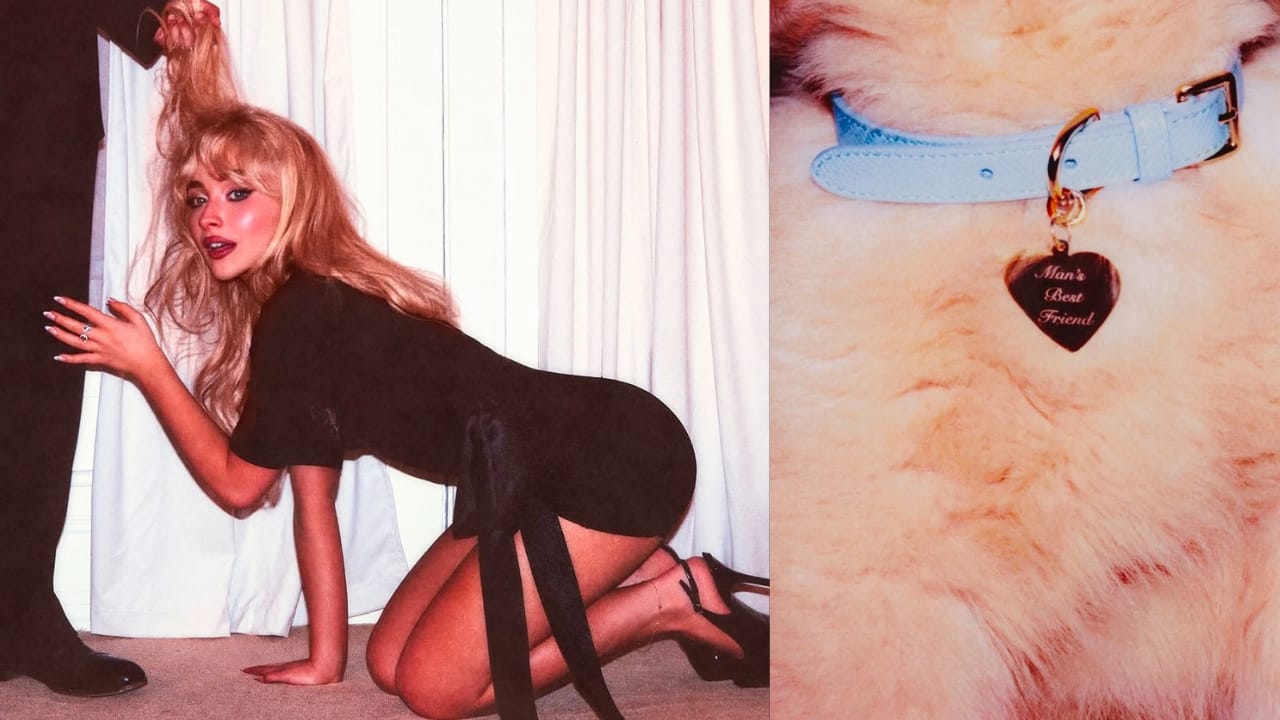
In the days following the reveal of Sabrina Carpenter’s new album cover, the internet did what it does best. It reacted, dissected, and divided. Here we unpack the cultural tensions beneath the surface, reading the album art as a lens through which broader anxieties about power, femininity, and performance in pop culture come into focus.
In an era where pop feminism coexists uneasily with the commodification of outrage, cultural lines are being redrawn by the churn of online discourse. On the internet, where context is scarce and opinion is currency, anything can lead to a global debate. The internet can crown a feminist icon on Monday and call for her cancellation by Wednesday, all while parsing a single image. That tension between performance and power, irony and impact is at the heart of the controversy surrounding Sabrina Carpenter’s forthcoming album, Man’s Best Friend.
Unveiled on June 11, 2025, the cover art didn’t whisper for attention but demanded it. Sabrina Carpenter, on her hands and knees in a black mini-dress and stilettos, is shown with her hair being pulled by an unseen man. The second picture posted had a dog wearing a collar that reads, unmistakably, “Man’s Best Friend.” The visual struck a nerve and not just one.
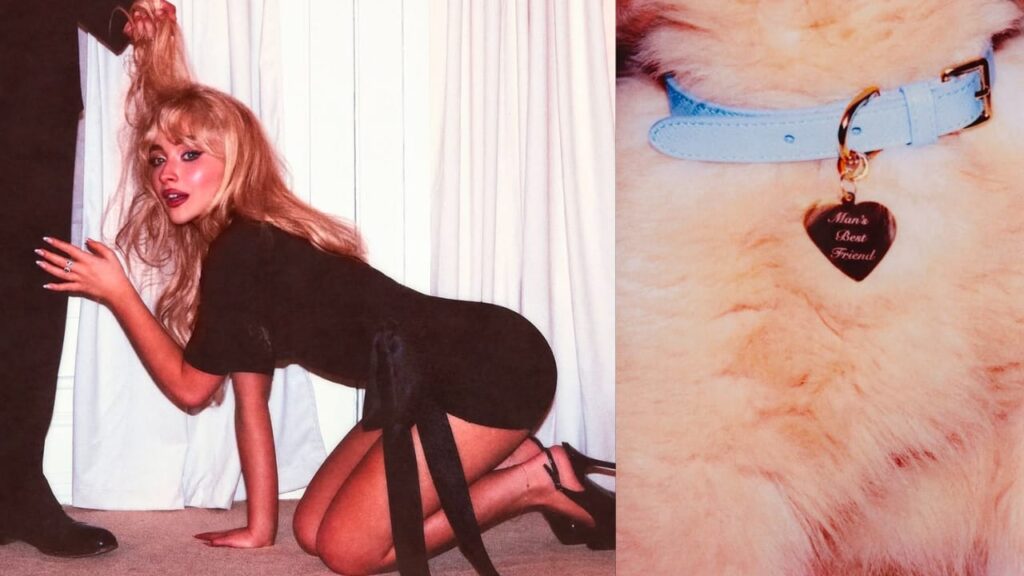
The Outrage: Misogyny in the Name of Art?
For many, the image crossed a line. Critics called it “degrading,” “tone-deaf,” and even “dangerously close to abuse imagery,” pointing to the submissive pose and hair-pulling as problematic signifiers. In a time where conversations about gender, consent, and objectification are more talked about than ever, the cover was accused of glorifying the very power imbalances feminism fights to dismantle.
What stung most for some was the perceived trivialization of violence against women (intentional or not). Sabrina Carpenter’s sizable young, largely female fanbase only amplified concerns, raising questions about the messages embedded in pop culture’s most shareable content. After all, in the age of the algorithm, an image rarely comes with its intended context.
The Defense: Satire, Subversion, and a Pop Provocateur
Yet, to others, the outrage missed the point entirely. Supporters argue the image is a satirical send-up of how women are reduced, infantilized, and leashed (figuratively and literally) by societal expectations. Placed alongside the lead single Manchild, which skewers immature male behavior, the cover reads to many as a deliberate, exaggerated critique of the roles women are made to play.
Her defenders have compared her to artists like Madonna, whose 1980s provocations once drew similar ire but are now seen as landmarks of feminist disruption. Carly Simon even entered the fray, calling Carpenter’s image “tame” compared to her own controversial Playing Possum cover from 1975, and reminding critics that art and outrage have always danced closely.
What This Debate Really Reveals
More than a debate about one pop star’s choices, the Man’s Best Friend controversy highlights the increasingly fragile space where art meets activism, and where interpretation often overrides intention. It’s not just that the image divided audiences but also revealed the divisions within feminism itself. On one side is a cautionary stance: artists have responsibility, and imagery matters, particularly when consumed by millions when many of them are young and impressionable. On the other is a belief in feminist autonomy, in the power of women to use even the language of submission to challenge the systems that created it.
These aren’t new debates but the speed and volume of digital culture mean they play out faster, louder, and with fewer shades of gray. As we all know the internet leaves a very little room for nuance. What might have once been an artistic provocation now becomes a 10-second flashpoint, judged not in essays or reviews, but in quote tweets and comment sections.
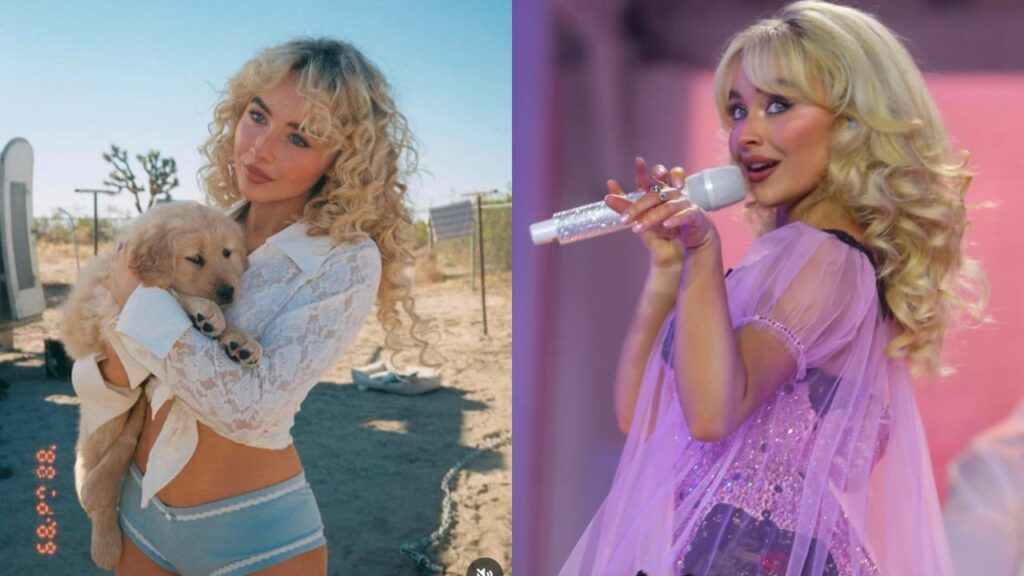
Between Empowerment and Exploitation
So where does Man’s Best Friend really land in the ongoing conversation about power, gender, and performance in pop culture? The answer depends largely on whether one interprets Sabrina Carpenter’s choices as a reinforcement of a long-standing power fantasy or a subversive attempt to expose and dismantle it from within. Perhaps the discomfort the image provokes is itself the point which is an intentional provocation meant to challenge viewers to confront the contradictions embedded in popular representations of femininity and control. Whether it ultimately reads as a misjudged gesture or a sharp piece of cultural critique, the cover has undeniably started a necessary dialogue about how these dynamics are communicated, consumed, and contested.
It also reveals a deeper generational and ideological divide that has become increasingly pronounced in the digital age. For younger audiences who understand irony, meme culture, and postmodern self-awareness, the image might register as a playful form of rebellion, one that knowingly exaggerates in order to critique. For others, particularly those more attuned to the realities of lived inequality and the ongoing struggles against gender-based violence, the visual treads dangerously close to territory that feels all too real and raw, regardless of artistic intention. As pop culture continues to collapse the distance between commentary and consumption, between performance and lived experience, Man’s Best Friend functions as a cultural litmus test, measuring not just our opinions about one artist’s creative vision, but our broader anxieties and expectations surrounding representation itself.
Whether the cover is ultimately embraced as a feminist statement or condemned as a lapse in judgment, its ability to provoke such wide-reaching discourse underscores a simple but powerful reality: even in 2025, a single pop image retains the power to disrupt, divide, and demand attention, revealing just as much about the culture interpreting it as about the artist who created it.
Also Read: Your Wardrobe Might Be Reflecting a Recession
Follow us for more : Dis_cultured
-
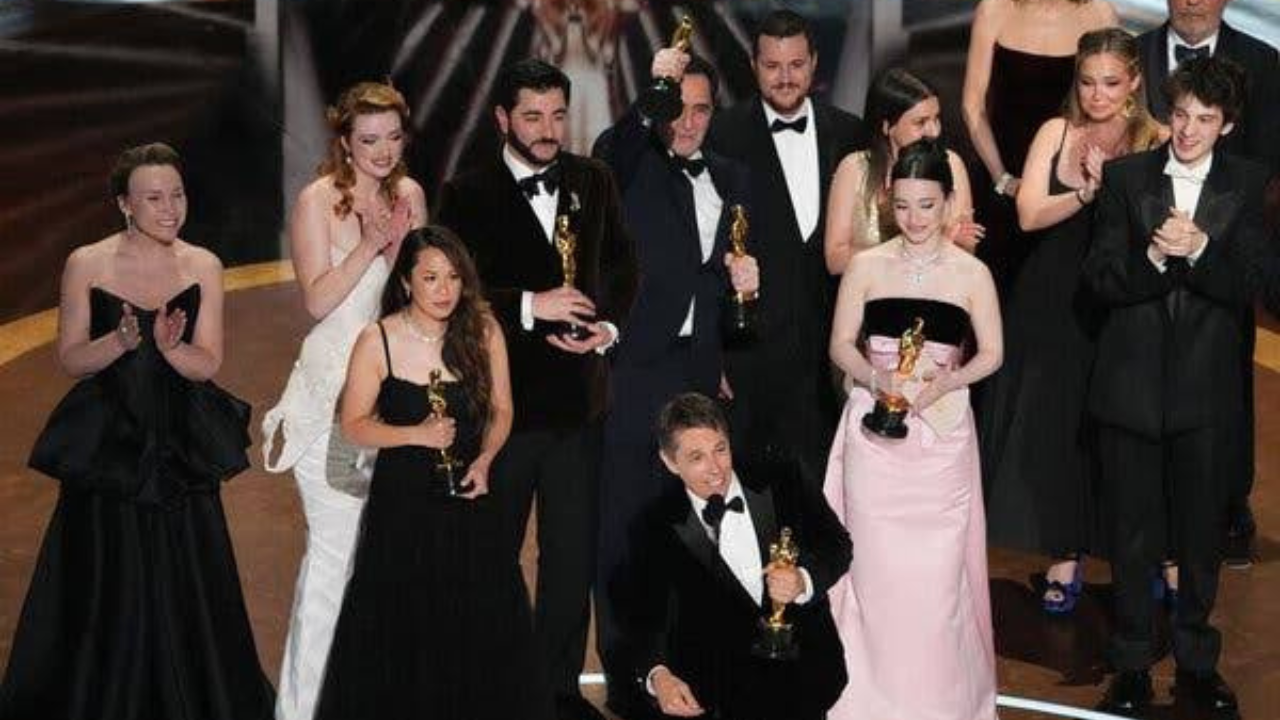
 Events9 months ago
Events9 months agoThe Most Memorable Highlights from the 2025 Academy Awards
-
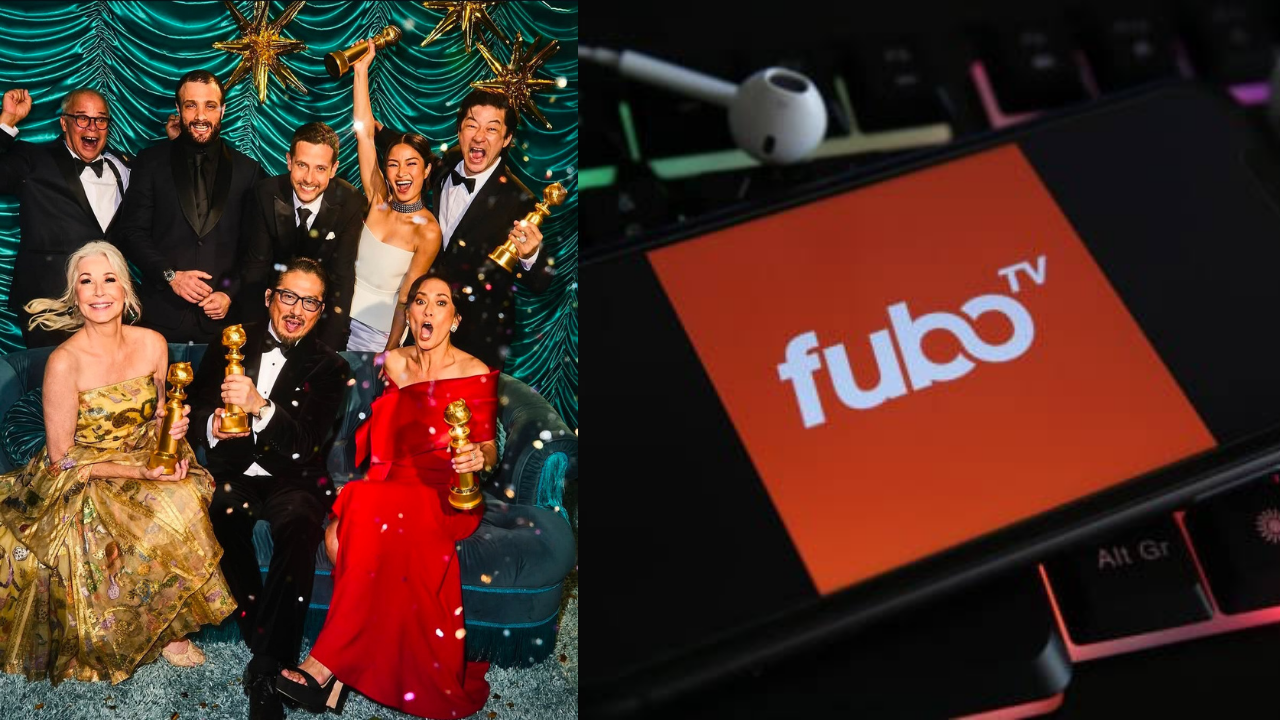
 Events11 months ago
Events11 months agoWeekly Pop Culture Recap: Talkworthy Highlights from the 82nd Golden Globes Awards, Disney’s Merger with FuboTV and Much More
-

 Fashion7 months ago
Fashion7 months agoYour Wardrobe Might Be Reflecting a Recession
-

 Social10 months ago
Social10 months agoMeta Phases Out Fact-Checking and Adopts a Community-Driven Approach similar to X
-

 Fashion7 months ago
Fashion7 months agoDupatta Labeled as European Aesthetic is a Case of Cultural Erasure
-

 Events7 months ago
Events7 months agoWhat Indian Celebrities Wore to the Met Gala 2025
-
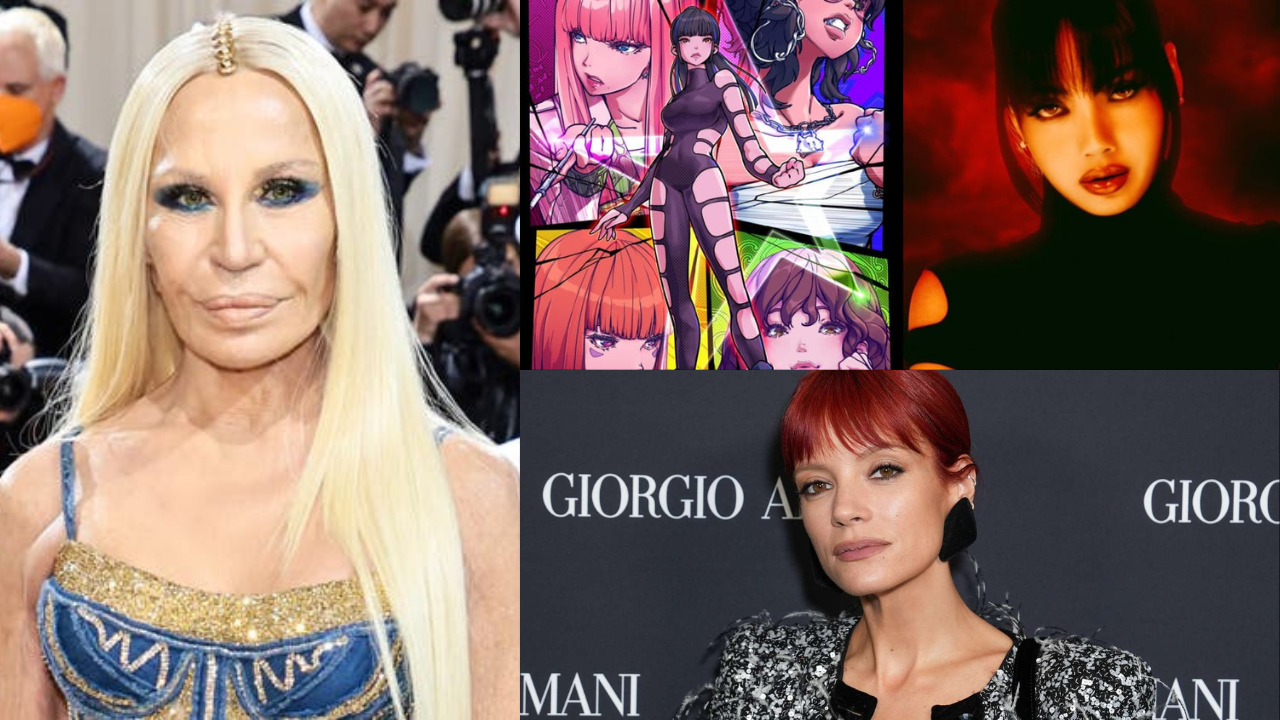
 Fashion8 months ago
Fashion8 months agoWeekly Pop Culture Recap: Donatella Versace has resigned as Versace’s Chief Creative Officer, BLACKPINK’s Lisa is branching out with her graphic novel, ALTER-EGO.
-

 Events6 months ago
Events6 months agoThe Biggest Moments for Indian Cinema at Cannes 2025 That Had Everyone Talking









Pingback: What's so special about Hayao Miyazaki's "The Boy and the Heron" - Discultured